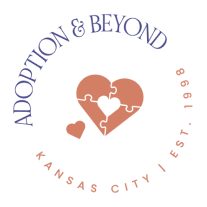You may wonder, ‘Why do I need a template for a post-adoption contact agreement?’ A comprehensive and well-thought-out agreement is crucial for establishing clear expectations and ensuring the best interests of all parties involved.
Utilizing a template saves time and effort while still addressing your specific adoption situation’s unique needs and circumstances. But how do you create an effective agreement that covers all the necessary aspects?
This discussion will explore the factors to consider, key elements to include, and tips for negotiating agreement terms. Stay tuned to discover how these templates can pave the way for successful post-adoption contact arrangements.
Key Takeaways
- Post-adoption contact agreements are important for establishing ongoing communication between adoptive families and birth parents.
- Understanding the legal implications of these agreements is crucial, as they vary from state to state.
- Crafting agreements requires balancing and addressing emotional factors, as well as setting clear guidelines for communication.
- Regularly reviewing and revising the agreement is essential to ensure its effectiveness over time.
Understanding Post-Adoption Contact Agreements
Understanding post-adoption contact agreements is crucial for adoptive families to establish and maintain ongoing communication with birth parents or other significant individuals in a child’s life. These agreements have both legal implications and emotional impact, making it necessary for adoptive families to comprehend their importance.
From a legal standpoint, post-adoption contact agreements outline the terms and conditions surrounding communication between adoptive families and birth parents. These agreements vary from state to state, ranging from informal understandings to legally binding contracts. By understanding the legal implications, adoptive families can ensure they comply with the law and protect the child’s best interests.
Beyond the legal aspect, post-adoption contact agreements also have a significant emotional impact on all parties involved. For adoptive families, these agreements can provide a sense of security and reassurance, knowing that they can maintain a connection with the child’s birth parents. This ongoing communication helps the child develop a sense of identity and understand their roots, which can positively impact their emotional well-being.
Similarly, birth parents may find comfort in post-adoption contact agreements, as they provide an opportunity to stay connected with their child’s life. It allows them to witness the child’s growth, ensuring they know their well-being and development. This connection can help birth parents cope with the grief and loss associated with the adoption process.
Factors to Consider in Crafting Agreements
Crafting post-adoption contact agreements involves considering several factors that will shape the terms and conditions of ongoing communication between adoptive families and birth parents. Two important factors to consider are legal considerations and the emotional impact of the agreement.
Firstly, it’s crucial to consider the legal aspects of the agreement. This includes understanding the laws and regulations regarding post-adoption contact in your jurisdiction. Familiarize yourself with all parties’ requirements, limitations, and rights. Consult with a legal professional specializing in adoption to ensure that the agreement is legally enforceable and protects the interests of everyone involved.
Secondly, the emotional impact of the agreement should be carefully considered. Adoption is a complex and emotional process, and the post-adoption contact agreement can have a profound effect on the individuals involved. Both the adoptive parents and birth parents need to express their desires, concerns, and boundaries regarding ongoing contact. It’s essential to consider the child’s emotional well-being and create an agreement that promotes their best interests.
When crafting the agreement, it’s important to address these factors in a balanced and sensitive manner. The agreement should provide clear guidelines for communication, respecting the wishes and comfort levels of all parties involved. Regularly reviewing and revising the agreement as the child grows and circumstances change is also crucial.
Key Elements to Include in Templates
To create effective post-adoption contact agreement templates, it is important to include key elements that address the needs and concerns of all parties involved. These elements should cover both the legal requirements and the communication expectations. By including these essential components, the agreement can provide clarity and guidance for everyone involved in the post-adoption contact.
Legal requirements are an essential aspect to consider when crafting these templates. This includes specifying each party’s legal rights and responsibilities, such as the frequency and duration of the contact, the method of communication, and any restrictions or limitations that may be in place. It is crucial to ensure that the agreement complies with relevant adoption laws and regulations to avoid any future conflicts or legal issues.
In addition to legal requirements, the agreement should clearly outline communication expectations. This includes determining how the parties will communicate, whether it be through phone calls, emails, or in-person visits. The frequency of communication should be established, along with any guidelines or boundaries that may be necessary. By setting clear expectations, all parties can feel secure and confident in maintaining a healthy, positive post-adoption relationship.
To help visualize these key elements, here is a table summarizing the legal requirements and communication expectations that should be included in post-adoption contact agreement templates:
| Legal Requirements | Communication Expectations |
|---|---|
| Frequency and duration of contact | Method of communication (phone, email, etc.) |
| Legal rights and responsibilities | Guidelines for in-person visits |
| Restrictions or limitations | Frequency of communication |
Tips for Negotiating Agreement Terms
When negotiating agreement terms, it’s important to communicate your needs and concerns. This will help ensure that the final agreement meets your expectations and addresses potential issues.
Here are some tips to help you navigate the negotiation process:
- Be prepared: Before entering into negotiations, take the time to understand your own needs and priorities. This will help you articulate your position effectively and stay focused during discussions.
- Listen actively: Negotiation is a two-way process, and it’s important to listen carefully to the other party’s needs and concerns. By actively listening, you can better understand their perspective and find areas of compromise.
- Be flexible: You’re unlikely to get everything you want in the agreement. Be open to finding creative solutions and be willing to make concessions if necessary. Flexibility can help foster a more cooperative negotiation process.
- Set communication boundaries: Clearly define how and when you’ll communicate with the other party after the agreement is finalized. Establishing communication boundaries can help prevent misunderstandings and maintain a healthy post-adoption relationship.
Ensuring Long-Term Success With Agreements
To ensure long-term success with agreements, it is crucial to establish clear expectations and ongoing communication channels, building upon the foundation of the negotiated terms. Establishing boundaries and maintaining open communication can create a solid framework supporting a positive and sustainable post-adoption contact agreement.
One way to establish boundaries is by clearly defining the scope and frequency of contact between the birth and adoptive parents. This can be done through a written agreement outlining both parties’ expectations and limitations. For example, you may agree to regular updates and visits while also respecting the adoptive parents’ privacy and the child’s need for stability.
Maintaining open communication is essential for the long-term success of the agreement. This means being honest and transparent about any changes or challenges that may arise. Regular check-ins and discussions can help address any concerns and make necessary adjustments to the agreement. It is important to approach these conversations with empathy and respect for each other’s perspectives.
To further illustrate the importance of establishing boundaries and maintaining open communication, consider the following table:
| Establishing Boundaries | Maintaining Open Communication |
|---|---|
| Clearly define the scope and frequency of contact | Regular check-ins and discussions |
| Respect privacy and stability | Address concerns and make necessary adjustments |
| Consider the child’s needs | Approach conversations with empathy and respect |
Summary
Crafting post-adoption contact agreement templates can be a complex task. However, it’s crucial for ensuring long-term success in post-adoption relationships.
By carefully considering factors such as communication preferences and boundaries, you can create a solid foundation for the agreement. Including key elements like visitation schedules and dispute-resolution methods is important.
These agreements can help provide stability and clarity for all parties involved. They allow adoptive parents, birth parents, and the adopted child to have a structured framework for their ongoing relationship.
Remember to negotiate and tailor the terms to suit everyone’s needs. This will ensure that the agreement is fair and balanced. Open communication and flexibility are key when creating a successful post-adoption contact agreement.
Investing time and effort into crafting a well-thought-out post-adoption contact agreement is essential. It lays the groundwork for a healthy, positive relationship between all parties involved.

